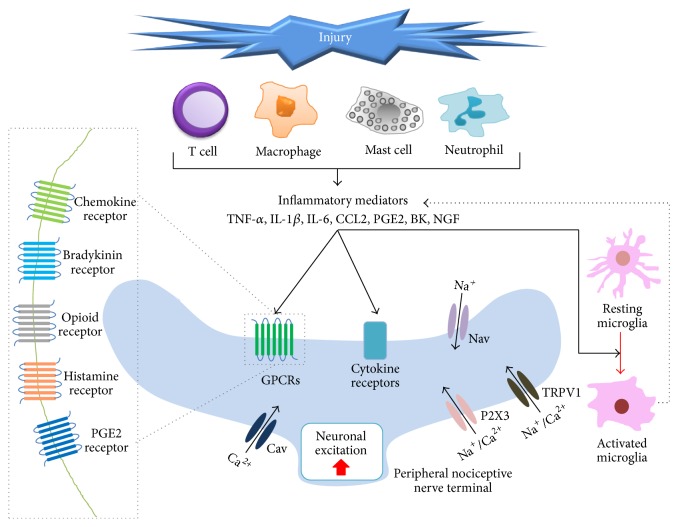Figure 1.
Mechanisms involved in peripheral sensitization in neuropathic pain. Tissue and nerve injury lead to inflammation, including neuroinflammation, via activation of immune cells (T cells, macrophage, mast cell, and neutrophil), by releasing diverse inflammatory mediators, such as TNF-α, IL-1β, IL-6, CCL2, PGE2, BK, and NGF, in nearby peripheral nociceptive nerve terminal. These mediators act on their respective receptors, including TRPV1, P2X3, cytokine receptors, and G-coupled protein receptors. The activation of these receptors results in upregulation of Ca2+ and cyclic AMP, which related to several kinase signaling pathways. Altogether, these mechanisms can lead to neuronal excitation and microglial activation, as well as gene expression changes in sensory neurons. Overactivated microglia can also trigger neuropathic pain via inflammatory mediator-related signaling.

